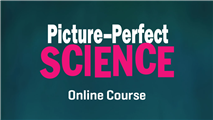All Resources
Web Seminar
Archive: Science Update: COVID-19: Don’t Panic but Know the Science, March 25, 2020
Turn on any TV, look on social media and you’ll hear about the coronavirus and COVID-19 but what do you really need to know about it? Join NSTA for a web seminar to learn more of the science about what this virus is, where it came from, and h...
Virtual Conference
Picture-Perfect Science Online Course, Sep 2020
A Picture-Perfect Science Online Course includes:...
Online Course
Picture-Perfect Science Online Course, Sep 2020
A Picture-Perfect Science Online Course includes:...
Journal
The Science Teacher—March 2020
Volume 87, Number 7 Making science come alive and having students address critical social issues creates a more socially just environment, where all students truly are created equal. ...
Journal
Journal of College Science Teaching—March/April 2020
Volume 49, Number 4, March/April 2020 ...
NSTA Press Book
Integrating STEM Teaching and Learning Into the K–2 Classroom
New in 2020!“Integrating STEM Teaching and Learning Into the K–2 Classroom is a critically important contribution toward advancing STEM teaching and learning. It blazes a trail for early elementary classroom practitioners to reflect the latest th...
By Jo Anne Vasquez, Michael Comer, Jen Gutierrez
Journal Article
With calls to reassess higher education teaching methods, active learning practices have quickly become a popular alternative to traditional lectures, especially in STEM courses that traditionally rely heavily on large-lecture formats. In this rega...
By William C. Beckerson, Jennifer O. Anderson, John D. Perpich , and Debbie Yoder-Himes
Journal Article
Building First-Year Science Writing Skills With an Embedded Writing Instruction Program
An important foundational skill developed in an undergraduate science program is the ability to find, critically evaluate, and communicate scientific information. Effective science communication depends on good writing; therefore, we leveraged stud...
By David Dansereau, L. E. Carmichael, and Brian Hotson
Journal Article
Teamwork Makes the Dream Work: Using Team-Based Learning in the Science Classroom
With an overwhelming amount of research and a demand for collaborative learning in the classroom, teachers are tackling challenges at all educational levels that often accompany the social aspects of group work. Team-Based Learning (TBL) is an inst...
By Virginia J. Moore, Elizabeth Mitchell Prewitt, Amber Jean Carpenter-McCullough, and Brooke A. Whitworth
Journal Article
Studies on the effectiveness of clickers in undergraduate chemistry courses are mixed, and there is disagreement on how to effectively leverage clickers to improve student learning performance. To fill a gap in the research, we analyzed three diffe...
By David J. Weiss, Patrick McGuire, Wendi Clouse, and Raphael Sandoval
Journal Article
How Does Climate Change Affect Oyster Populations?
By Jane Wolfson, Mary Stapleton, and Asli Sezen-Barrie
Journal Article
By Kirsten D. Edwards, Amelia Wenk Gotwals, and Tanya S. Wright
Journal Article
Student-Constructed Weather Instruments Facilitate Scientific Inquiry
Students in introductory college science courses often have a simplified understanding of the scientific method. To introduce students to the complexity of the scientific process and the value of empirical observations, I implemented a semesterlong...
By Cindy Shellito
Journal Article
A Team-Taught Interdisciplinary First-Year Seminar With a Focus on Blood
First-Year Seminars (FYS) offer a unique mode of introducing college students to new topics, research practices, and approaches to learning that they may not have been exposed to in high school. In this article, we outline the successes and challen...
By Adele J. Wolfson and Justin Armstrong
Journal Article
Chemical mnemonic devices have been designed to aid students in understanding chemical concepts in previous years. This has been done for concepts such as oxyanions, ozonolysis, tautomerization mechanisms in organic chemistry, and writing reactions o...
By Angela L. Mahaffey
Journal Article
Evaluating Information: The Impact of Major, Class Standing, and Experience With Primary Literature
Social media platforms and other internet sites may propagate inaccurate or misleading information. This misinformation encourages speculation, rumors, and mistrust in established science. In the current study, we attempted to determine whether bio...
By Shawn Stover and Michelle Mabry
Web Seminar
Archive: Science Update: Hubble's 30th Anniversary, April 29, 2020
The Hubble Space Telescope (HST) was launched into Earth orbit on 24 April 1990 by the Space Shuttle. A flaw in the primary mirror initially made it look destined to be a historic failure. Space-walking astronauts made repairs and upgrades on five mi...
Journal Article
Tell the story of an important event that happened in your family. Tell the story of a place that is important to your family. Tell the story of how your family or the world will change in 10 years....
By Carrie Tzou, Daniel Rother, Ashley Braun, Elizabeth Starks, Meixi Ng, Enrique Suárez, Amanda Rambayon, Philip Bell, Don LaBonte, Amy Twito, Shawn Peterson, Sara Marie Ortiz, and Megan Bang
Journal Article
The Wings Over Water (WOW) collaboration began with ospreys....
By Allison De Jong, Jenélle Dowling, Erick Greene, and Sharon Leigh Miles
Journal Article
Building Community With Educators
After a string of successes in our teacher professional development programs at the Denver Museum of Nature & Science (DMNS), I recently began to notice a disconcerting trend: Teachers stopped coming. Despite efforts to draw program participant...
By Robert Payo
Journal Article
By Byung-Yeol Park, Laura Rodriguez, and Todd Campbell
Journal Article
Arguing About a Chemical Change
Use a sample ACT writing prompt in an explore-before-explain instructional sequence to a 9th-grade physical science class to promote student learning and demonstrate that mass is conserved in a chemical reaction ...
By Patrick Brown




